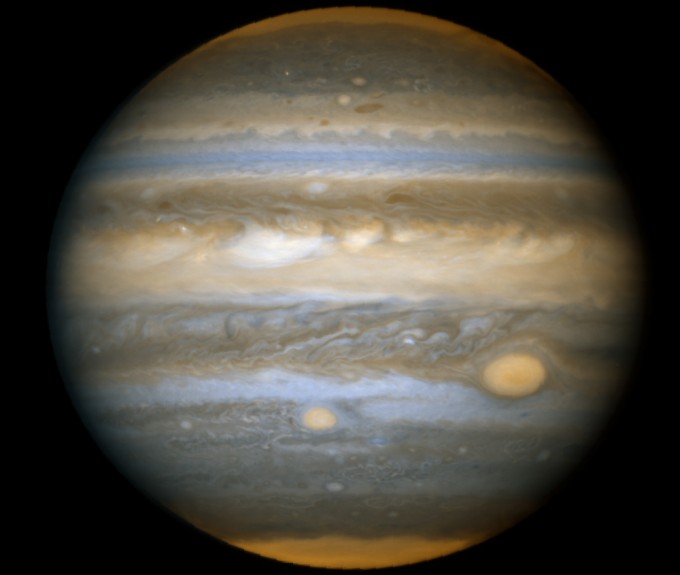Credit & Copyright: NASA,
ESA,
A. Simon-Miller
(Goddard
Space Flight Center),
I. de Pater, M. Wong
(UC Berkeley)
Explanation:
Jupiter's Great Red Spot
is a swirling storm seen for over 300 years, since the beginning of
telescopic
observations.
But in February 2006, planetary imager
Christopher Go noticed it
had been joined by Red Spot Jr - formed
as smaller whitish oval-shaped storms
merged and then developed the remarkable reddish hue.
This sharp Hubble Space Telescope
image showing the two salmon-colored Jovian storms
was recorded in April.
About half the size of the original Red Spot,
Red Spot Jr.
is similar in diameter to planet Earth.
Seen here below and left of the ancient storm system,
it trails the Great Red Spot by about an hour as
the planet rotates from left to right.
While astronomers still don't exactly understand why
Jupiter's red spots are red,
they do think the appearance of Red Spot Jr. provides
evidence for climate change on the
Solar System's ruling gas giant.
1999 2000 2001 2002 2003 2004 2005 2006 2007 2008 2009 2010 2011 2012 2013 2014 2015 2016 2017 2018 2019 2020 2021 2022 2023 2024 2025 |
Yanvar' Fevral' Mart Aprel' Mai Iyun' Iyul' Avgust Sentyabr' Oktyabr' Noyabr' Dekabr' |
NASA Web Site Statements, Warnings, and Disclaimers
NASA Official: Jay Norris. Specific rights apply.
A service of: LHEA at NASA / GSFC
& Michigan Tech. U.
|
Publikacii s klyuchevymi slovami:
storm - Jupiter - red spot - Yupiter
Publikacii so slovami: storm - Jupiter - red spot - Yupiter | |
Sm. takzhe:
Vse publikacii na tu zhe temu >> | |
